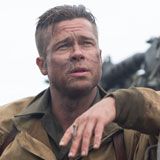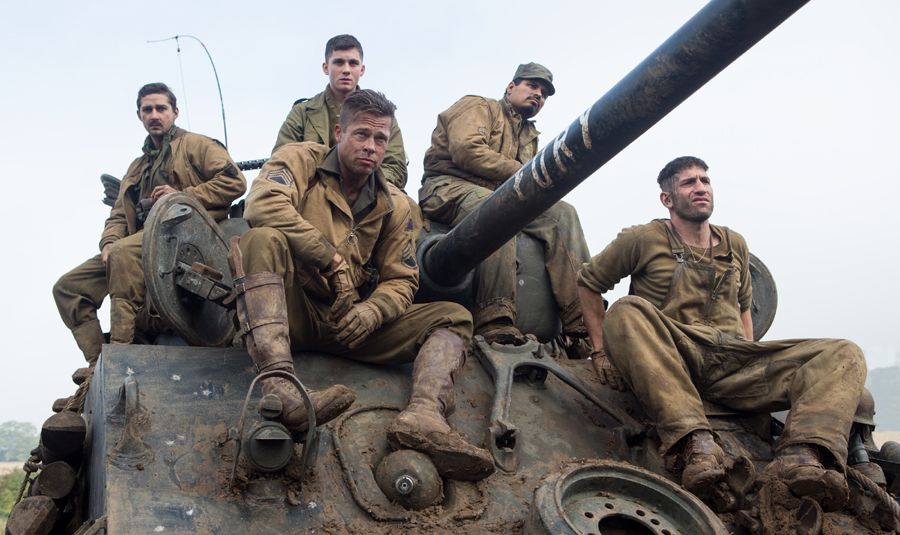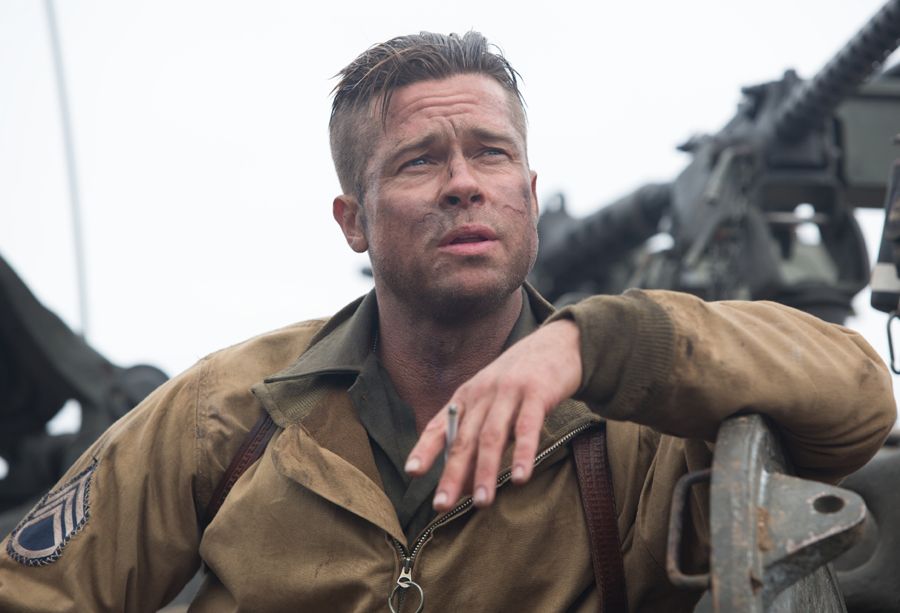Fury is the World World II version of Apocalypse Now, only without Kurtz, and the nuance.
While writer/director David Ayer elicits strong performances from his cast and delivers intense (but sensationally gory) set pieces, he has nothing unique to add to the “war is hell” conversation -- save for proving that the adage is especially true when tanks are involved.
As Allied forces push into Germany in the closing days of World War II, the veteran Fury tank crew, led by vulnerable badass Don “Wardaddy” Collier (Brad Pitt), loses a member in combat, compromising its already-threadbare emotional integrity. But along with the addition of an untested recruit, typist Norman (Logan Lerman), come new orders: Advance to Berlin and take out any and all Nazi opposition.
The film soon brings the veteran-rookie relationship between Wardaddy and Norman to the forefront – a dynamic familiar both to the writer of Training Day and to fans of Saving Private Ryan. But Wardaddy is a much darker character than Tom Hanks’ Captain Miller. He pushes Norman to become a killer while also trying to save enough of the kid’s innocence to ensure that his leader has a shot at redemption by the time the climatic final battle arrives.
Unlike most men-on-a-mission war movies, Fury has no Private Ryan to save, no “final boss” to take down and no strategic place to secure. The story is merely a series of episodic side missions. As a result, there’s no narrative cohesion to tie it all together, and the final product is a realistic, but excessively violent and confused war epic.
Ayer’s previous directorial effort, End of Watch, succeeded with such episodic plotting, but here, that narrative choice mostly backfires -- as does its portrayal of American soldiers as executioners. Painting its heroes in nothing but gray is admirable, but Ayer’s depiction is emotionally unrealistic. Would dozens of troops really just stand around and laugh as Wardaddy forces a gun into Norman’s hand to execute a surrendered German soldier?
The movie commits to morally dire scenes like this, which makes it difficult to care for anyone in this unlikeable ensemble, especially when Ayer puts them in a kill box during the third act. Here, the director apparently expects audiences to shed a tear for these people as they embark on a suicide mission. And while each member of the tank crew is given one last heroic moment in the final 30 minutes, the movie seems to forget how hard it worked over the previous hour and a half to remind us that these men are far from heroes.
Michael Pena Finds His WWII-Era "Fury" Before a Secretive Stint in "Ant-Man"
There’s a compelling point to be made about glorifying and demonizing such men. Unfortunately, Ayer’s script invests more time turning war into a series of gory kill screens than playing off that point.
At the center of this is Wardaddy, a mutt of a soldier. He’s the grizzled hard-ass commander who can stab a Nazi in the eye one minute and wax poetic about ideals and history the next. He’s educated and gruff, sensitive and cruel. He’s burdened with an appreciation of normalcy and the violent skillset necessary to protect it during wartime. That attempt at character complexity is inspired – on paper. But in the execution, Wardaddy comes off more convoluted than complicated; a Mad-Lib of personality traits in search of a whole character. With what character is there, however, Pitt elevates with a solid, “less is more” performance.
That’s more than can be said for the other members of the tank crew, who are given the bare minimum of characterization. Boyd “Bible” Swan (Shia LaBeouf) is the stock religious member, while Trini “Gordo” Garcia (Michael Peña) and Grady “Coon-Ass” Travis (Jon Bernthal) are jaded, borderline alcoholics -- with the latter working overtime to be the most annoying and unlikable of the bunch.
LaBeouf is serviceable with what he’s given, but his default acting choice during key scenes is crying a single tear. Peña is largely wasted, and Bernthal is saddled with the most grating of characters. The movie tries to make him sympathetic late in the game, but by then he’s way past the point of redemption. It’s mostly Lerman and Pitt’s show, with the former delivering a credible performance.
"The Walking Dead's" Jon Bernthal Unleashes His Big-Screen "Fury"
What Ayer lacks in nuanced storytelling he makes up for with his approach to the action scenes. His best set piece is a tank-versus-tank battle, with the Fury crew outgunned against the well-armored enemy. It’s fraught with tension, and the geography of the action is easy to follow. Even more effective are the quieter moments, especially one poignant beat as soldiers watch a clear sky streaked with the contrails of planes – both American and German – moments away from a dogfight.
Less successful is a baffling midpoint scene in which Wardaddy and Norman force two young, attractive women – the survivors of a war-torn village -- to break bread with them and provide special “R&R.” Tonally, it’s all over the place – especially when the rest of the crew, led by a drunk and overly angry Coon-Ass, crash the dinner party. The crew, especially Bible, aim unmotivated rage and contempt at Wardaddy as he tries to ease back into a more civil mode despite his battlefield behavior. On the surface this sort of works, but not enough to justify grinding the narrative to a considerable halt.
Fury’s biggest problem is that Ayer wants to glorify war -- and those that fight it so that we don’t have to – but he just can’t get the two ideas to shake hands. This “have your cake and eat it too” approach results in a very engaging first half, but a very uneven second one.
The movie uses war as a crucible, boiling men like Wardaddy down to their darkest, most base parts. It just doesn’t find anything completely satisfying to do with those parts once it has them.
Fury is in theaters now.



